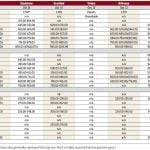Chicago | Reuters –– The U.S. Department of Agriculture (USDA) said Friday it has started analyzing for the first time data it has collected on the impact that wild pigs have on U.S. farmers’ crop and livestock operations.
It is estimated by federal and state agricultural officials that there are more than five million wild pigs in at least 35 states, with the largest populations in California, Florida, Oklahoma and Texas.
According to Agriculture Department estimates, it costs more than US$1.5 billion annually in damages and measures to control feral hogs.
Read Also

U.S. livestock: Cattle fall sharply as Trump says he’s working to lower beef costs
Chicago cattle futures fell sharply on Friday after U.S. President Donald Trump said his administration was working to lower the…
The agency said its National Agricultural Statistics Service (NASS) has surveyed more than 10,800 farmers in 11 states, asking if they had seen signs of feral swine in and around their farms and if any crop or livestock losses have been caused by the animals.
The Agriculture Department said in a statement that researchers at its Animal and Plant Health Inspection Service (APHIS) Wildlife Services were evaluating the data to determine what actions are needed to address problems caused by feral swine.
Wild pigs have also been found to carry diseases that can be transferred to livestock, humans, pets, and other animals in the wild.
— Reporting for Reuters by P.J. Huffstutter.
















